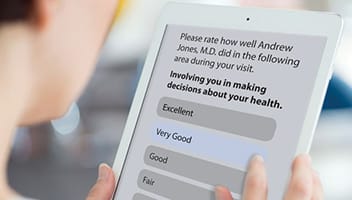Survey With A Purpose - Or Don't Survey At All
posted
on Thursday, June 23, 2016
 Surveys – before even thinking about doing a patient survey, make sure you survey with a purpose. Too many practices go through the motions of surveying patients because they think it’s something they should do. But they never do anything with the information. Countless surveys sit on a shelf collecting dust. The feedback never compiled.
Surveys – before even thinking about doing a patient survey, make sure you survey with a purpose. Too many practices go through the motions of surveying patients because they think it’s something they should do. But they never do anything with the information. Countless surveys sit on a shelf collecting dust. The feedback never compiled.
Why? Because practices are short-staffed and no one has the time to key in the information and tally results. If you can’t invest the time in results, don’t survey.
Now certainly technological advances have improved how we survey, and electronic surveys make reporting and analysis so much easier.
But even if you invest in electronic surveys, but have no purpose or goals behind the survey, don’t bother surveying. Know why you want to survey. Is it because patients are not returning to your practice? Perhaps you suspect a provider or two lacks in bedside manner? A rude receptionist?
Can you handle hearing the bad stuff? Are you ready to apologize and recognize you have something to fix? If not, don’t bother surveying. Practices who survey with a purpose use the feedback to drive improvement. Often, what the underlying reason for surveying was might lead you down a path that you never even thought was an issue and you refocus.
A recent survey of customers using POS Surveys found that 92% of practices surveyed patients to evaluate customer service, followed by 71% who wanted to gauge overall care and provider communication. Patient retention was a close third. These practices used the feedback to improve overall patient satisfaction and the communication between a patient and provider. Personnel changes, improved patient wait times and the overall patient registration process were improvements noted as well.
Patient surveys are a powerful tool if there is intention behind surveying and a commitment to do something with the feedback. And remember a lot of the feedback can be very positive too, which affirms your practice is doing things right. And that is just as important to share with patients and staff.